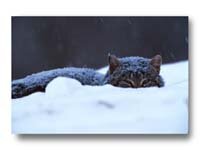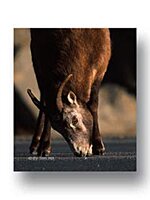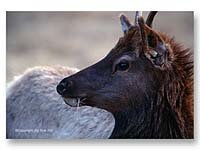

All Images And Text On This Site Are Copyright 1999-2001
by
Thomas D. Hill Jr.
February, 2001
The Eyes Make it
| ABOUT KEIKO |
| WHAT'S NEW |
| THE KEIKO GALLERY |
| EQUIPMENT |
| IMAGE OF THE MONTH |
| ARTICLE OF THE MONTH |

Since beginning my journey learning photography, wildlife nature photography, one thing is often repeated by the masters. There's an aspect of wildlife photography that will make or break any image--the eyes are everything. Your composition may be poor, the lighting can be slightly off, the image in general may be average at best. But, if you make dramatic eye contact between your subject and viewer you've created that tenuous link between the viewer and your work. It's a link that people remember. It's a connection that bring people into your work. If you involve your viewers, you done a wonderful thing. For some reason in wildlife photography, there's a quality about the eyes that make the difference. Have dramatic eye contact--make average image into awesome image.
There are lots of discussion in nature photography circles on the nature of "eye quality" that makes or breaks images. Catchlight--a speck of sunlight (artificial or natural) in an animial's eye--is often referred to for being the necessary ingredient to make nature subjects look alive. Without it, a bird may look like it's stuffed, dead, inanimate. With it, the illusion of movement, being alive is generated. Some folks say it makes the image look like the mind is working--the lights are on and someone's home. Catchlight they say promotes all these qualities. To ensure this, photographers may go to extraordinary lengths to provide artificial sources for their catchlight. Huge reflectors shinning light into their subjest. Long, light focussing lenses concentrating the light from their flashes to extend the range of these relatively weak sources of light. Is it worth it? Do we really have to as wildlife photographers go to such lengths to make our subjects look alive? Let's look.

None of these images were made wtih artifical means to create that catchlight quality. In fact, if you look closely you may notice none except the Big Horn Sheep Ewe have typcial, bright ill-defined catchlight in their eyes. The young bull elk below has a bit of catchlight but if you look closely his eyes don't have that artificial, well defined bright speck in an animal's eye. His eyes are reflecting the surround terrain. His eyes are reflecting the sky above and the ground below. They're showing off the world around him. He looks alive as if there's water in his eyes like you or I may have. That association with your experience of your own eyes is the connection that brings this image alive.
Neither the cat or owl have reflections, catchlight or other enhancement to improve the "liveliness" of their eyes. Still, both images clearly project active subjects and the quality of their eyes are critical for the success of the images . Even though they don't have that catchlight quality, the images are very much alive. Why is that? What makes these images work?


I personally like images whose qualities engage the viewer. That may mean I was actively engaged with my subject when making the image. I may have been quietly kneeling in a snow bank waiting for an owl to leap into the air when he'd glance in my direction to check my position as if I was just another part of the scenery. Okay, there are those out there that decry the possibility of man actively participant in a nature subject's life. They say it's overly disturbing to their lives. I disagree. A bird that glances in my direction and continues with his buisness is not disturbing anything. The world is a chaotic place and my addition--with a small foot print--won't add to anything to that chaos.
The final message to this article covers two things. 1) You do not need to have artifical enhancements to create engaging qualities with your subject. 2) Creating eye-to-eye contact with the viewer is a way to connect your viewer with the subject.
Good Shooting
Tom